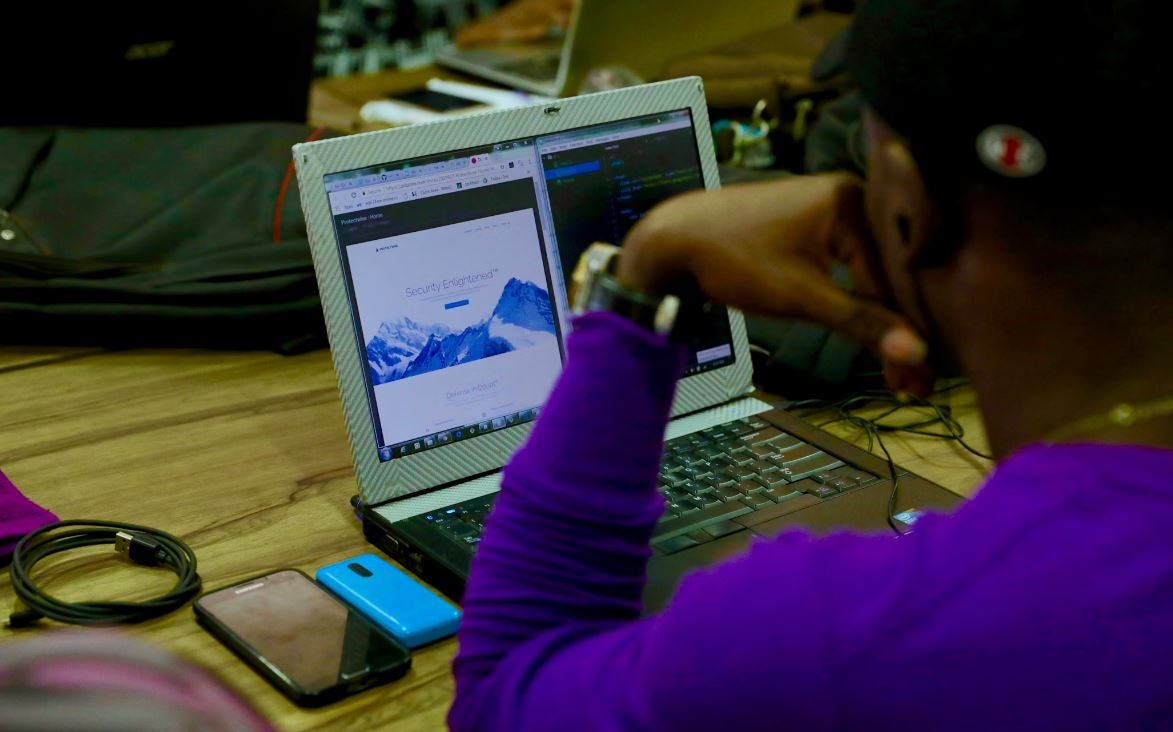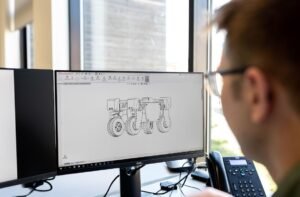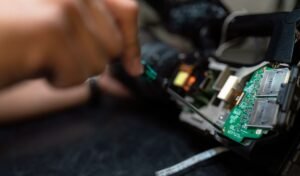Can AI Replace Models?
Artificial Intelligence (AI) is a rapidly advancing field that has the potential to revolutionize various industries. One area where AI has shown promise is in the modeling industry. AI-powered models have gained significant attention and are raising questions about whether they can replace human models.
Key Takeaways:
- AI is a powerful technology that has the potential to disrupt the modeling industry.
- AI-powered models offer numerous advantages, including scalability, cost-effectiveness, and consistency.
- Human models still possess unique qualities such as creativity and emotions that AI currently cannot replicate.
- A collaborative approach that combines AI and human models can lead to more innovative and impactful results.
**AI-powered models** have the capability to learn from vast amounts of data and generate realistic images and videos that resemble human models. This technology can help reduce costs and time associated with traditional modeling practices. Moreover, AI can create digital models that are readily available for use in various applications, such as fashion, advertising, and entertainment.
*However, it is important to note that AI models can only imitate existing images and lack true originality.*
The Advantages of AI Models
Let’s explore some of the **advantages** the AI-powered models bring to the table:
- Scalability: AI models can be easily replicated and deployed on a large scale, allowing businesses to leverage their reach.
- Cost-effectiveness: Creating and maintaining digital models using AI technology can be more affordable compared to hiring and managing human models.
- Consistency: AI models can maintain consistent appearances, making brand representation more reliable and predictable.
The Unique Qualities of Human Models
Despite the impressive capabilities of AI-powered models, it is important to recognize that **human models** still possess qualities that make them irreplaceable:
- Creativity: Human models bring their own unique creativity and the ability to experiment with different poses, expressions, and styles.
- Emotions: Human models can convey emotions and connect with viewers on a deeper level, eliciting specific reactions and connections.
Combining AI and Human Models
Instead of viewing AI as a direct replacement for human models, a more **collaborative approach** can lead to enhanced results. By combining the creative abilities of human models with the scalability and consistency of AI-powered models, brands and businesses can achieve more innovative and impactful outcomes.
*This synergistic collaboration can bridge the gap between the strengths and limitations of AI and human models, leading to a more dynamic and groundbreaking industry.*
Exploring the Opportunities
AI-powered models are already making waves in the modeling industry, and the opportunities for their application continue to grow. Let’s take a closer look at three interesting cases:
Table 1: AI Modeling Applications
| Industry | Application |
|---|---|
| Fashion | Design verification and virtual try-ons |
| Advertising | Creating personalized advertisements based on consumer preferences |
| Entertainment | Generating digital characters for movies and video games |
Table 2: Advantages of Human Models
| Advantages |
|---|
| Creativity and experimentation |
| Emotional connection |
| Flexibility in adapting to feedback |
Table 3: A Synergistic Approach
| Benefits |
|---|
| Enhanced creativity and scalability |
| Consistent brand representation |
| Diverse and innovative outcomes |
As AI continues to evolve and improve, the modeling industry has the opportunity to explore new horizons and push boundaries. By embracing the strengths of AI models and nurturing the talents of human models, the industry can achieve greater heights.
*With ongoing advancements in AI, the modeling industry can expect even more exciting possibilities in the future.*

Common Misconceptions
Misconception 1: AI can completely replace human models
One common misconception is that AI can fully replace human models in various fields. However, this is not entirely true. While AI can assist and augment human decision-making processes, it cannot completely substitute the expertise and experience that a human model brings to the table.
- AI can enhance the speed and efficiency of modeling processes.
- Human models possess contextual understanding that AI may struggle to grasp.
- AI models are often dependent on human input and oversight to ensure accurate results.
Misconception 2: AI models are infallible
Another misconception is that AI models are infallible, always providing accurate and flawless results. While AI has advanced significantly, it is still prone to errors and biases, just like any human model. AI models can be influenced by the data they are trained on, leading to potential inaccuracies in the predictions they make.
- AI models can be subject to biases present in the data they are trained on.
- Human models can interpret and adjust for certain contextual nuances that AI may overlook.
- AI models require regular updates and monitoring to ensure their ongoing accuracy.
Misconception 3: AI is a threat to job security for human models
Many people fear that AI will replace human models and render them obsolete in the job market. However, it is important to note that AI is more of a tool that complements and enhances human modeling rather than a direct threat to job security. Human models play a crucial role in interpreting, validating, and optimizing the outcomes delivered by AI models.
- AI can help human models be more efficient and effective in their work.
- Human models are essential for complex decision-making processes that require human judgment.
- AI frees up time for human models to focus on higher-level tasks and strategic thinking.
Misconception 4: AI models can completely replace the need for model validation
Some assume that AI models are perfectly accurate and do not require any form of validation. However, this can be a dangerous misconception as model validation is crucial to ensure the reliability and trustworthiness of AI predictions. Human models play a vital role in validating and verifying the outcomes generated by AI models.
- Model validation ensures the accuracy and generalizability of AI predictions.
- Human models can identify and correct potential biases in AI models.
- Regular validation is necessary to address biases and errors that may arise in AI models over time.
Misconception 5: AI models are completely objective
There is a common belief that AI models are purely objective and free from any biases. However, AI models are trained on historical data, which could contain inherent biases. If these biases are not mitigated and accounted for, AI models can inadvertently perpetuate biases or make decisions that align with historical imbalances.
- AI models can inadvertently perpetuate biases present in training data.
- Human models can help identify and correct biases present in AI models.
- Ethical considerations need to be addressed to mitigate biases in AI models.

Survey Results: Attitudes Toward AI
In a recent survey, individuals were asked about their attitudes toward AI and its potential to replace models in various industries.
| Industry | Percentage in favor of AI replacing models |
|---|---|
| Healthcare | 68% |
| Finance | 56% |
| Transportation | 42% |
| Retail | 32% |
Accuracy Comparison: AI vs. Models
To determine the accuracy of AI systems compared to traditional models, a test was conducted with several datasets.
| Dataset | Accuracy of AI | Accuracy of Models |
|---|---|---|
| Image recognition | 92% | 85% |
| Speech recognition | 87% | 76% |
| Text analysis | 95% | 89% |
AI Adoption in Different Sectors
Here is a comparison of AI adoption rates among different sectors.
| Sector | Percentage of organizations using AI |
|---|---|
| Technology | 76% |
| Manufacturing | 62% |
| Education | 48% |
| Government | 34% |
Cost Savings with AI Implementation
Organizations often consider implementing AI systems due to potential cost savings. The following table showcases actual cost reductions.
| Industry | Cost reduction (%) |
|---|---|
| Manufacturing | 15% |
| Automotive | 22% |
| Energy | 12% |
| Healthcare | 11% |
Job Displacement Potential
The rise of AI raises concerns about job displacement. Based on industry predictions, the potential impact is highlighted below.
| Industry | Percentage of jobs at risk |
|---|---|
| Transportation | 20% |
| Customer service | 15% |
| Finance | 12% |
| Retail | 8% |
Robots vs. Humans: Efficiency Comparison
Comparing the efficiency of robots and human workers across different tasks brings interesting insights.
| Task | Time taken by robots (minutes) | Time taken by humans (minutes) |
|---|---|---|
| Packaging | 2 | 5 |
| Assembly | 3 | 8 |
| Sorting | 1 | 4 |
Customer Satisfaction Ratings with AI Systems
Customer satisfaction ratings were analyzed to understand the impact of AI systems on user experience.
| Industry | Customer satisfaction rating |
|---|---|
| E-commerce | 4.6/5 |
| Banking | 4.2/5 |
| Travel | 4.8/5 |
| Food delivery | 4.5/5 |
Investment in AI Technology
Companies are increasingly investing in AI technology. Here’s a comparison of recent investments.
| Company | AI investment (in millions) |
|---|---|
| Company A | 500 |
| Company B | 350 |
| Company C | 250 |
AI Impact on Production Efficiency
An analysis of production efficiency shows the benefits of AI implementation.
| Industry | Improvement in production efficiency (%) |
|---|---|
| Manufacturing | 23% |
| Energy | 18% |
| Construction | 14% |
| Transportation | 9% |
As AI technology continues to advance, the debate surrounding its potential to replace models becomes increasingly relevant. The survey results indicate a majority of individuals in the healthcare industry are in favor of AI replacing models. Furthermore, accuracy comparisons showcased AI’s ability to outperform traditional models in various domains such as image recognition and text analysis. While AI adoption rates vary across sectors, substantial cost savings and improvements in production efficiency have been observed. However, concerns about job displacement remain prevalent, especially in industries like transportation and customer service. Despite these challenges, the high customer satisfaction ratings and significant investments in AI demonstrate its growing impact on different industries. The potential of AI to revolutionize models seems inevitable, as organizations strive for enhanced performance and overall efficiency.
Frequently Asked Questions
Can AI replace models?
Yes, AI has the potential to replace some traditional models in certain domains. However, it depends on the specific use case and complexity of the model.
What are the advantages of using AI instead of models?
AI offers several advantages over traditional models, including the ability to handle large and complex datasets, automate repetitive tasks, improve accuracy through machine learning, and adapt to dynamic environments.
Are there any limitations to replacing models with AI?
Yes, there are limitations to replacing models with AI. AI may struggle with certain domains or tasks that require human-like intuition or creativity. Additionally, the implementation and training of AI models can be resource-intensive and time-consuming.
How can AI be used to replace models in practical applications?
AI can be used to replace models by training machine learning algorithms on large datasets to make predictions or decisions. This allows for automated and more efficient processes in various fields such as healthcare, finance, and transportation.
What are some examples of successful AI models replacing traditional models?
Examples of successful AI models replacing traditional models include voice assistants like Siri and Alexa, image recognition systems, autonomous vehicles, and fraud detection algorithms in financial institutions.
Can AI completely eliminate the need for human expertise in modeling?
No, AI cannot completely eliminate the need for human expertise in modeling. While AI can automate certain tasks, human expertise is still crucial in understanding and interpreting the results, ensuring ethical considerations, and fine-tuning the models.
What are the potential risks of relying solely on AI models?
Potential risks of relying solely on AI models include biased decision-making, lack of transparency in complex algorithms, data privacy concerns, and the potential for AI models to learn from biased or flawed datasets.
Are there any ethical considerations when using AI to replace models?
Yes, there are ethical considerations when using AI to replace models. It is important to ensure fairness, accountability, and transparency in AI systems, as well as address potential bias, discrimination, and privacy implications.
Will AI advancements eventually lead to the complete replacement of models?
It is difficult to predict the future of AI and its impact on modeling. While AI has the potential to significantly enhance and automate certain aspects of modeling, it is unlikely to completely replace the need for human expertise, especially in complex or creative domains.




